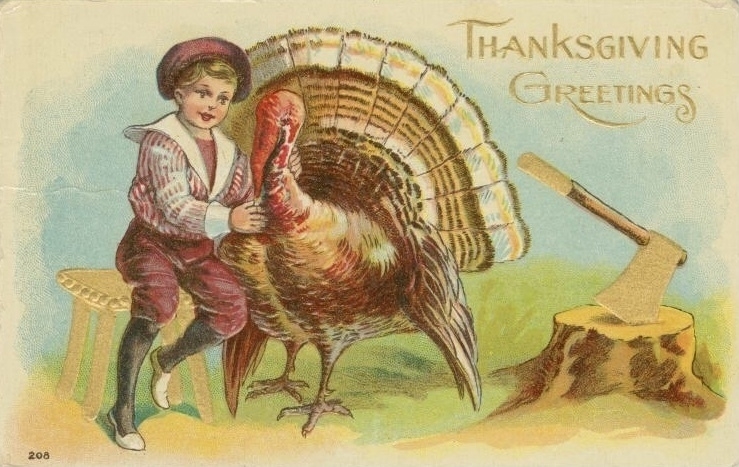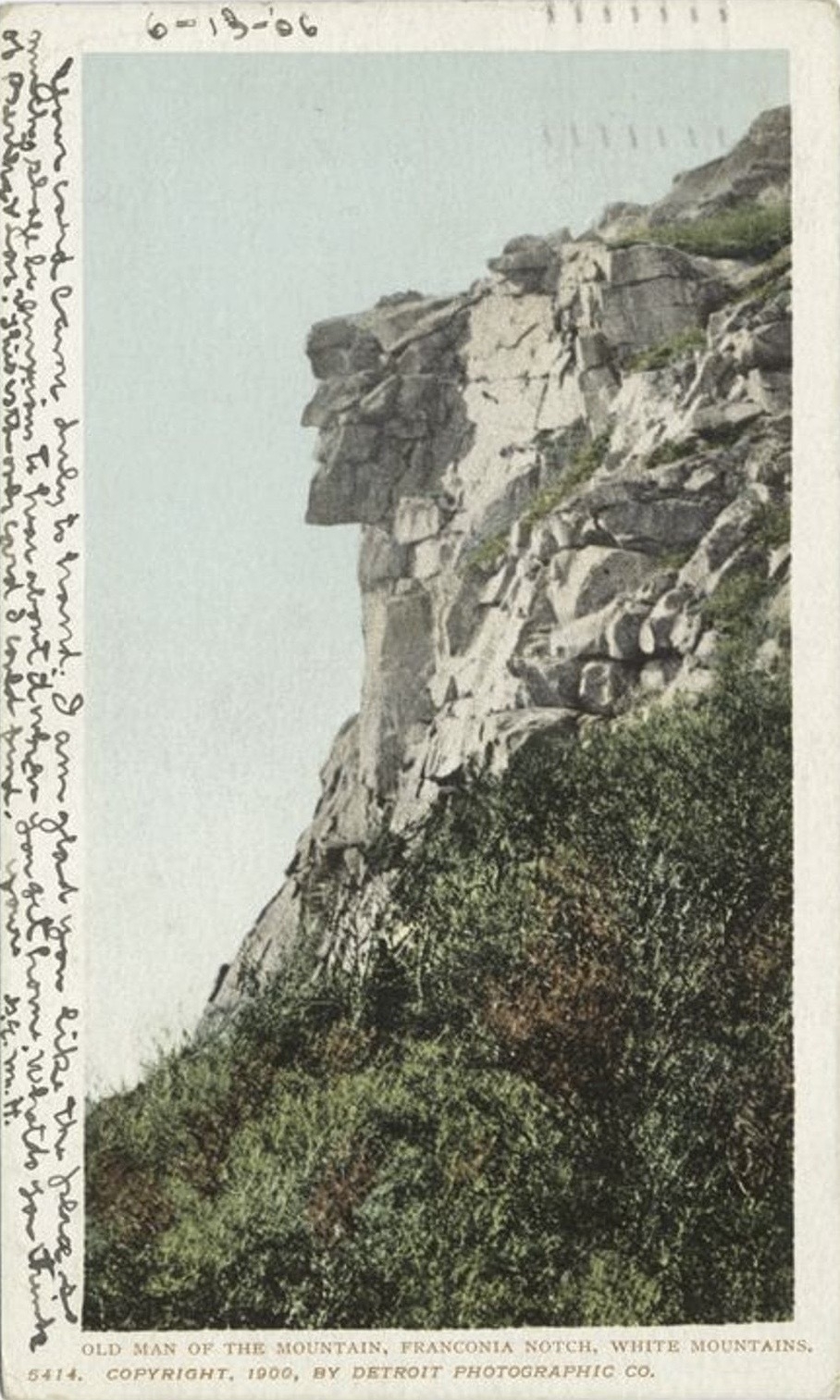Postcards
-
Written in ink partly over the English caption are some words in French I can’t quite make out. Source: The Newberry Library, John I. Monroe collection of artist-signed postcards, https://collections.newberry.org/asset-management/2KXJ8ZS64D8UI. ↩︎
A Happy Easter
Postcard mailed in 1919. Leonard A. Lauder collection of Raphael Tuck & Sons postcards, Newberry Library, NL12SKTP.
April Fool
My son sent me a picture of a blurry coywolf running in front of his house this afternoon. This evening he had my young granddaughter say “April Fools!” during our video chat. The photo was a product of AI.
Our fascination with such fakes doesn’t just go back to Photoshop and before that photocopiers. There were plenty of joke postcards in the early twentieth century, many of them agricultural. There were ears of corn as long as hay wagons, onions that took two men to roll up a ramp into a truck or wagon, a Maine potato that filled a whole flatbed rail car, and so on. The jackalope was also popular.
Image via Bill Lende collection of tall tale postcards, The Newberry Digital Collections, id NL12843G.
The rivers are full to bursting with melted snow and ice where I live, but there’s still snow, especially at higher elevations, and I felt like sharing something fun.
Postcard by Xavier Sander. Publisher: B.M., Paris. Early 20th century. Repository: John L. Monroe Collection, The Newberry Library, NL1267WV.
Knock-Out Blow to the Russian Bear: Postcard from 1904–05
“Your size and weight don’t count in my style of wrestling.”
This was the last in a series of six postcards that marked the Russo-Japanese War (1904–05).1 I chose it because its caption speaks to Russia’s current war against Ukraine. The Russian Bear’s smaller opponent says, “Your size and weight don’t count in my style of wrestling.” Unlike today, Japan, not Russia, began this war with a surprise attack. Still, observers assumed the Russian Bear would prevail. It did not, and the Tsar faced revolution at home. The bigger the beast, the harder the fall.
The war in Ukraine is different, but there, too, Russia is running up against the limits of its strength. It is facing economic collapse and worse. Rather strangely, the new-old U.S. president wants to throw his weight behind the corrupt old Russian Bear. Doing so will cost more Ukrainian lives and the United States its reputation and influence. But Ukraine will come up with new ways to stop Russia. Meanwhile, the political cartoonists will continue to do their thing, if not on postcards.
This funny old German postcard about “the end of the world” caught my attention because of tomorrow’s big event in Washington, DC, Orange Oaf’s return to the White House. The card feels somewhat prophetic, but the earlier threat it references was celestial, not human. Many people were panicking because Earth was expected to pass through the tail of Halley’s Comet on May 19, 1910.
One of the signs to the right in the postcard advertises “Airplanes for rent | Deliverance from the apocalypse!” The other offers big jugs of gasoline, each containing enough to reach (reichend ) the moon, or pungent enough for the odor to carry (riechend ) that far. The airplanes, dirigibles, and hot air balloons for escaping to the moon look as fanciful as their purported purpose.
Source: Newberry Library, John I. Monroe collection of fantasy postcards, NL116N96.

1909 Thanksgiving postcard via The New York Public Library. Image ID: 1588318.
Old Man of the Mountain postcard written in 1906. The Old Man, located in Franconia Notch, collapsed in 2003, but he remains a symbol of the state.
Postcard by the Detroit Photographic Co. Digital image from The New York Public Library, Image ID 62116. To learn more, see the history, images, and links at Wikipedia.



![Backside of a postcard with preprinted and handwritten text. They communicated on March 29, 1981, on channel 13, and she wants station unit 793 to send her a card: 'Nice [to] talk to you, today, time 10:56, in Waterloo Iowa. You [sound] so good, I am glad to talk to you. you be 10-8 all the way. I am so glad, thanks […?…] here my state today.](https://eu.uploads.micro.blog/166262/2025/b414ddd221.jpg)





